
When the Oregon Department of Transportation strong-armed the City of Portland to remove the bike lanes and bike boxes on Southeast 26th Avenue and Powell Boulevard in 2018, we knew it would make the crossing less safe. But ODOT persisted. In a twisted plan to encourage people to not bike on 26th (lest they get hit and make ODOT look bad) the agency removed infrastructure that was meant to protect them.
Looking back, that plan was both twisted and tragic.
That’s because on October 4th of last year, Sarah Pliner was riding her bike to work and somehow came into contact with a large trailer pulled by the driver of a semi-truck who was making a right turn from 26th onto Powell. The collision killed Pliner and her body came to rest just yards from where ODOT removed the bike box.
Now the Portland Bureau of Transportation has re-installed the bike boxes. One of them is in the exact spot where, just four months ago Oregon Walks leader (now Metro Councilor) Ashton Simpson stood in the southeast corner of the intersection with a sign that read, “Human Bike Box.” He was part of a large protest that helped force the hand of PBOT and ODOT to step up and do the right thing.
It’s nice to see this infrastructure come back. But I won’t celebrate, because it cost us the life of Sarah Pliner.

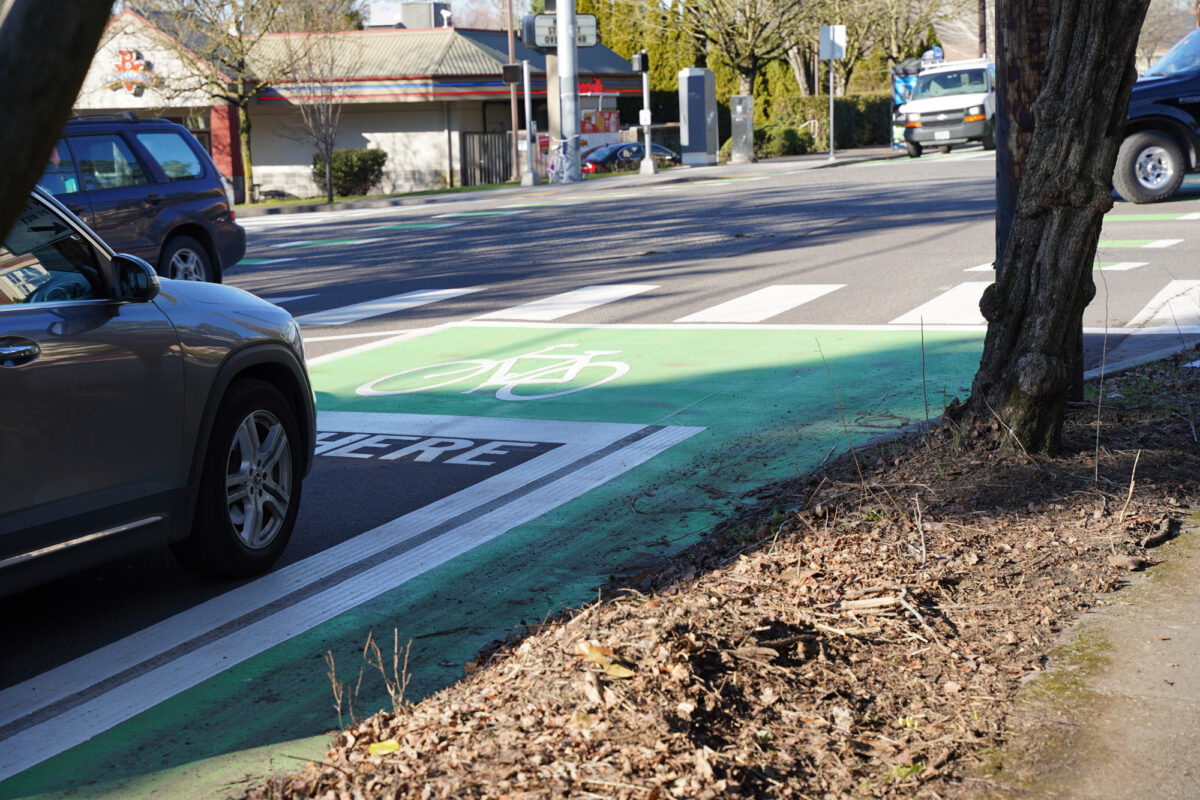
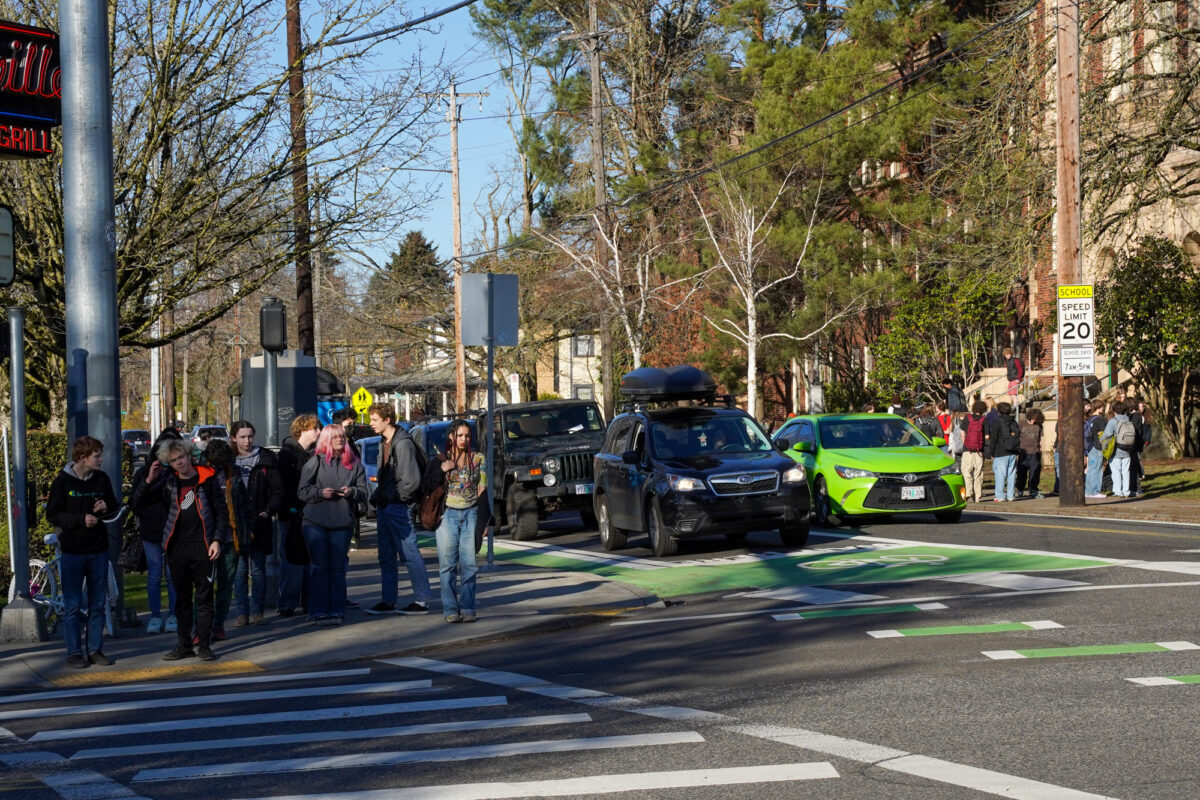
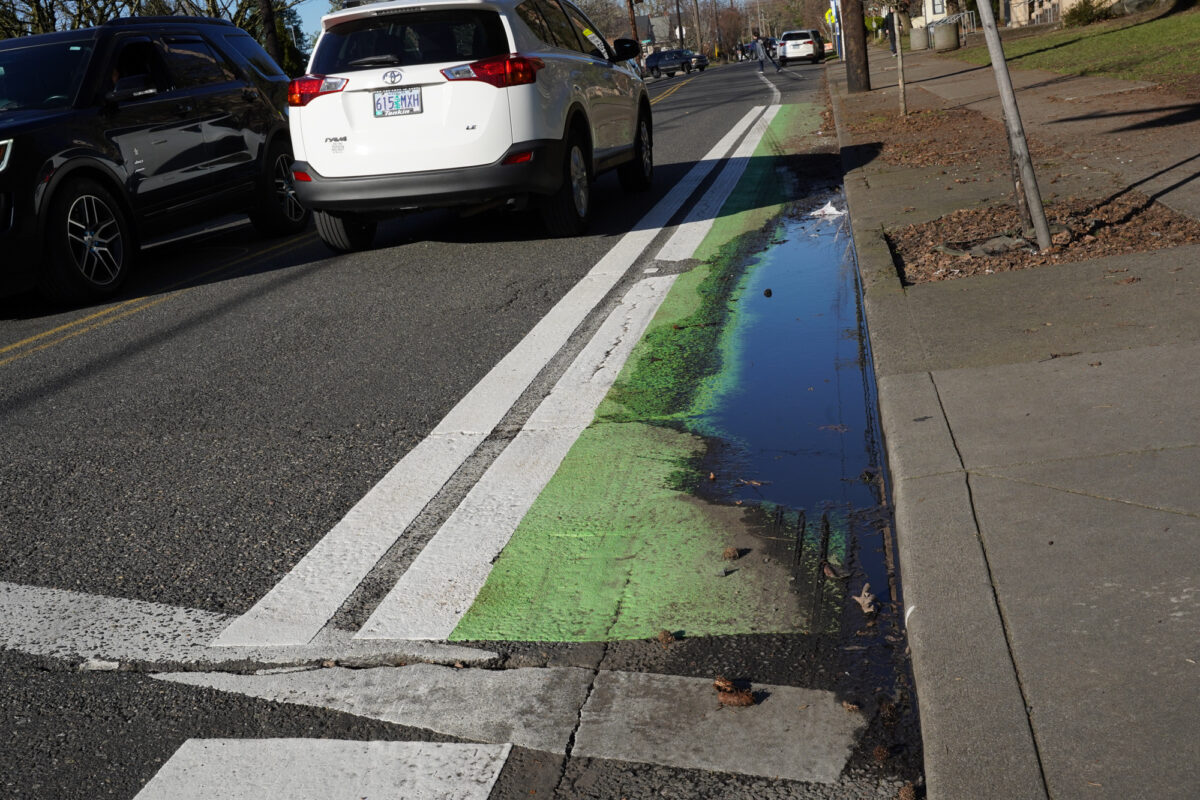


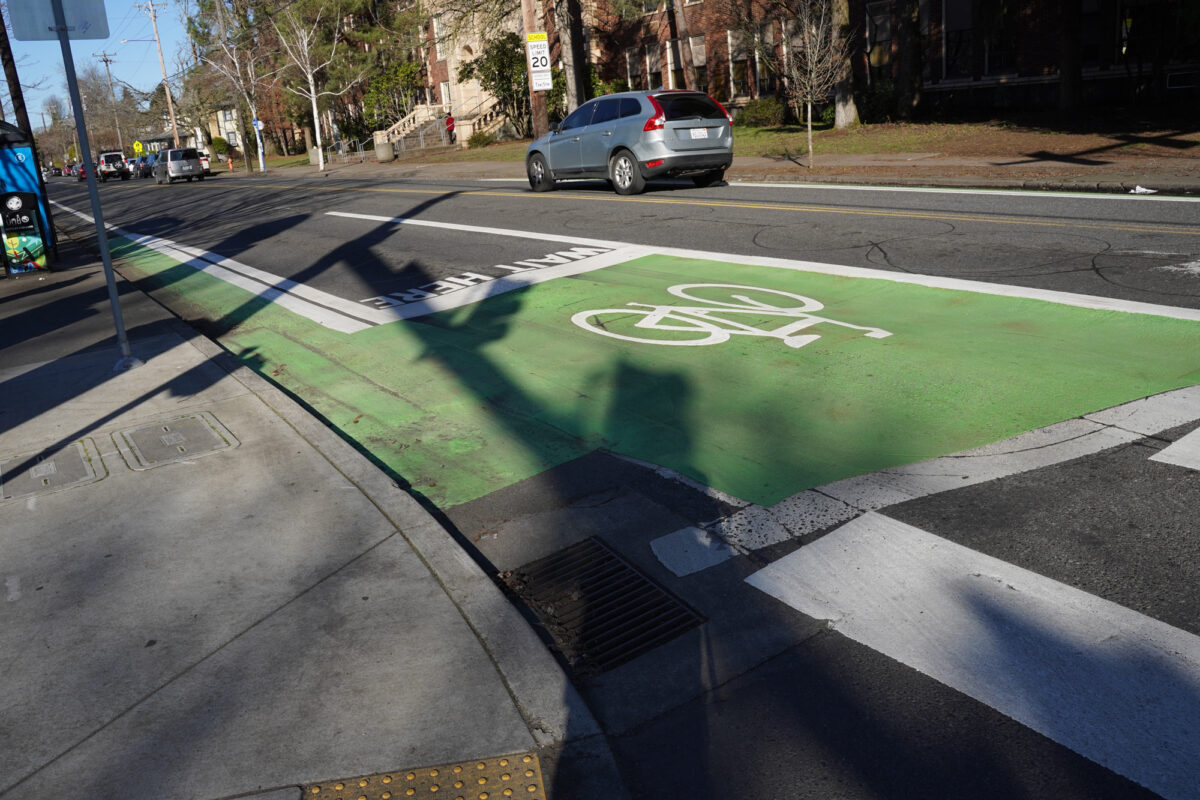
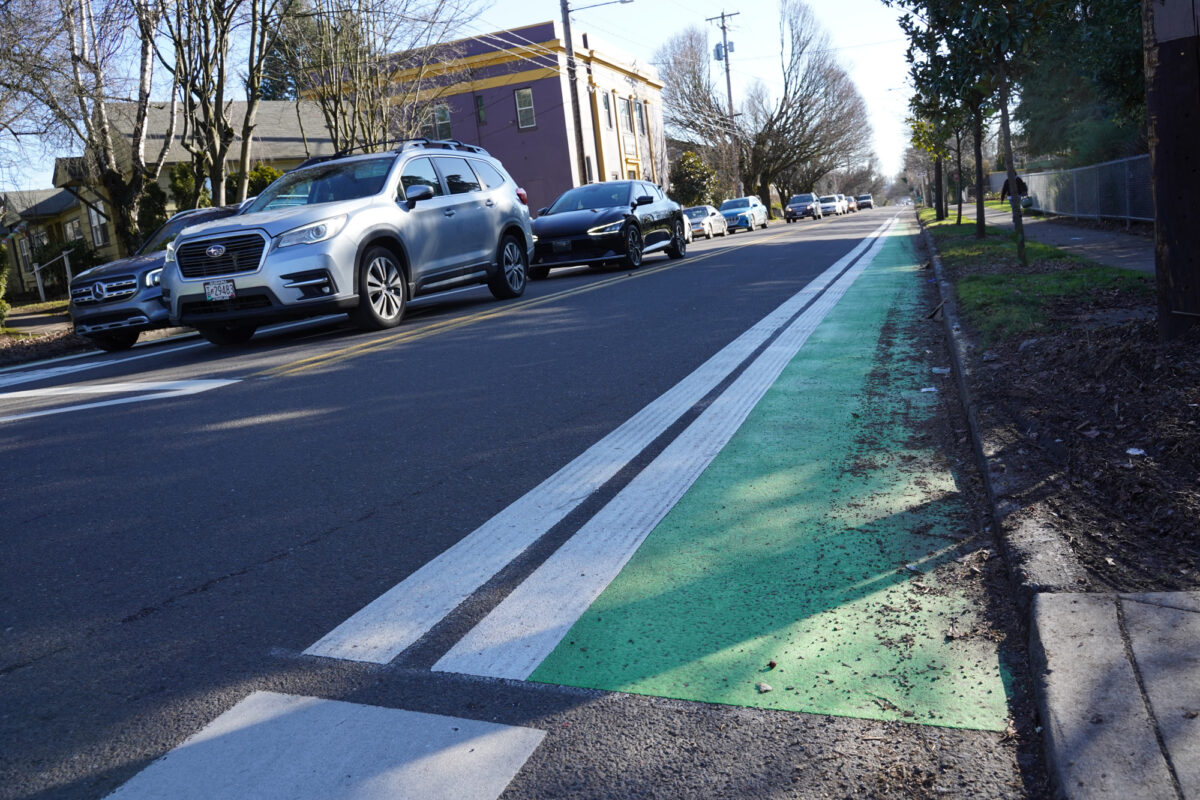



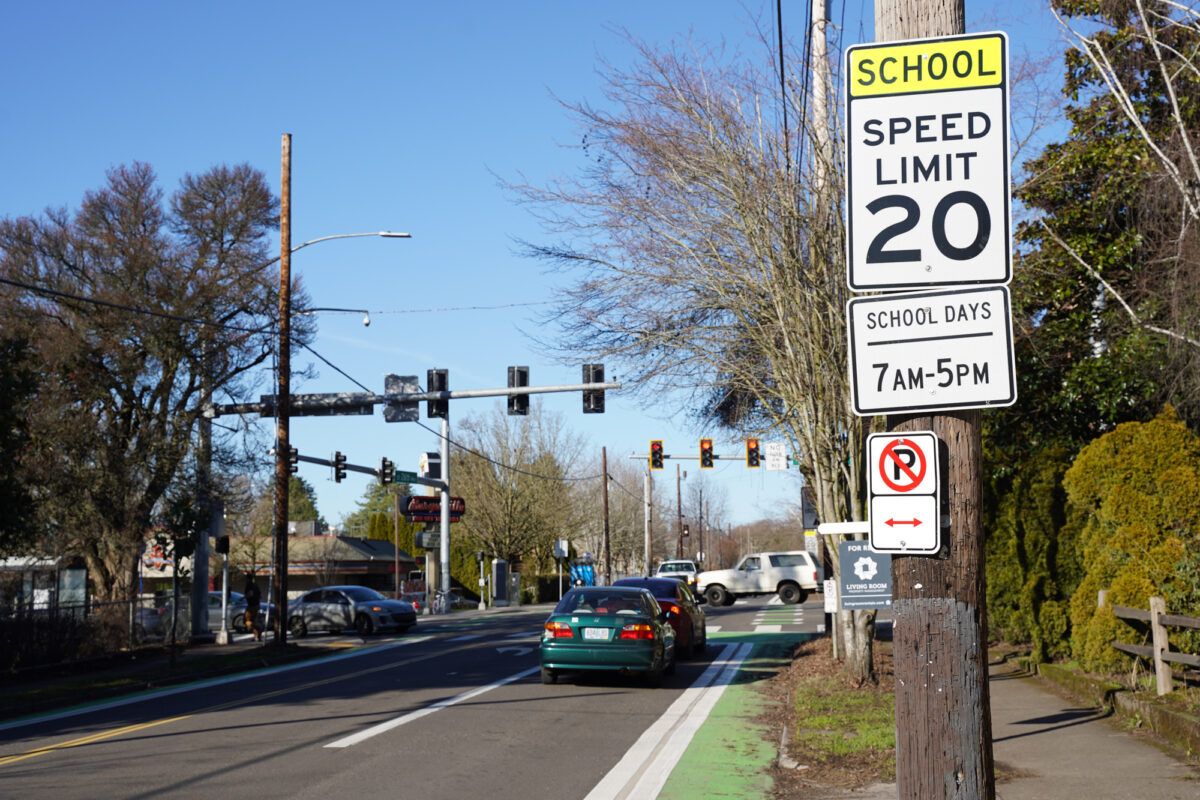
When I visited the intersection yesterday to take a closer look, I had that sick feeling in my stomach. That mix of anger and frustration I’ve had so many times over the years as we sit back and wait for the city and state to get serious about reining in the inherent danger of streets filled with people driving cars and trucks in a way that endangers us every single day.
It’s the same feeling I had in July 2008 when I rolled up to West Burnside and 14th — the intersection I’ll always know as the place where Tracey Sparling was run over and killed by the driver of a large truck who — just like in Sarah’s case — was making a right turn. At that time, bike boxes were new, but the threat of right-hooks wasn’t.
When I heard about the installation of a bike box where Tracey died, I called her aunt. “It makes me physically ill to consider that such a simple fix would have definitely prevented the right hook that killed my niece,” she told me. When I got home and worked on my story, all I could think of was why Tracey had to die before we took that simple step. It was a bittersweet bike box. I even made a video about it (below).
The re-born bike boxes at 26th and Powell occupy a similar place in my head. When ODOT, PBOT, and The Street Trust agreed to remove them, we knew people would still ride through that intersection. We knew it would more dangerous. But they were removed anyway.
I’m glad they’re back. They seem to work very well. Combined with the head-start on the walk signal (a.k.a. leading pedestrian interval, which I was happy to see a bike rider use, even though Oregon law hasn’t caught up to this behavior yet), the new curbs in the southeast corner where Sarah was killed, the lower speed limits and school zone signage, it feels like drivers have calmed down a bit.
We haven’t done nearly enough to tame traffic on Powell Blvd, but adding back green bike lanes and bike boxes in both directions is a good step forward — or should I say a step sideways since we’ve merely added back what we had before.
Would they have saved Sarah’s life? We will never know. What we will always know, is that that it took her death to get them back.



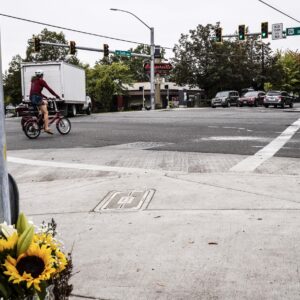

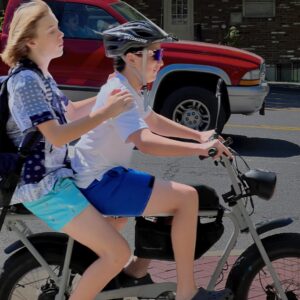
Thanks for reading.
BikePortland has served this community with independent community journalism since 2005. We rely on subscriptions from readers like you to survive. Your financial support is vital in keeping this valuable resource alive and well.
Please subscribe today to strengthen and expand our work.
Thank you for that article on Tracey Sparling and all the subsequent articles on right hooks! That was the first that I had heard of it and that knowledge saved me from such a collision. I was waiting at a stop light at N Rosa Parks Blvd. heading north on Denver Ave when a semi pulled up beside me and decided to turn right on red. He was obviously in a hurry! I immediately jumped up on the curb and watched as his rear wheels ran over the bike lane in which I had been awaiting the light change.
I’ve been testing the feel of 26th & Powell in the last couple weeks on my bike with the boxes back. And it’s So Much Better. From the obvious like not being crowded at the intersection & folks actually not turning on red to the less obvious, but not unexpected, of drivers just behaving more cautiously when passing me, etc. The boxes give value to my use of the space as legitimate.
However, I will never not be mad they were removed and Street Trust called it a victory. I will also never not be mad or despondent that professional civil servants removed them in the name of safety for peds and cyclists. I can not ride through there without it being somehow an emblem/symbol of backwards movement — REMOVING non car infrastructure.
I agree with this comment very much.
kind of like what odot is doing now to pedestrians by removing crosswalks. odot never learns from their mistakes, they just double down and only make small concessions once someone dies
ODOT is concerned with Car transportation. it should be called: ODOcarT
Closing sidewalks is a legal move. If someone gets hurt crossing they can say “look, we told you it wasn’t a safe intersection and you shouldn’t cross there. Don’t blame us”
Infrastructure is not a bad thing however much it hurts to have another person die before one bit of paint is put down. I didn’t know Sarah Plainer but now I won’t pass that spot without feeling her loss. There are so many places like that. The light tower at SE 37th and Taylor, the lonely spot on NE 122nd where my friend Ted was run over in a bike lane, the overpass on NE Columbia, and on and on.
Infrastructure is not the whole thing though. There’s no infrastructure at 18th and E Burnside where a guy on a smoke break, leaning against the building he worked in, was wantonly killed by a driver breaking several traffic laws as he crossed the intersection. Never knew him: miss him still.
Motor vehicle operation under the charade of licensing is broken. It’s a cultural problem that the physical environment can’t entirely fix.
Comment of the Week: “Motor vehicle operation under the charade of licensing is broken. It’s a cultural problem that the physical environment can’t entirely fix.”
Substandard and dangerous bike lanes! Victory!
I also found the celebratory tone of this piece to be nauseating. These micro-bike lanes are nothing to celebrate.
Sad that a thin, grim strip of green paint at essentially the site of a bike rider’s death is categorized as a “bike lane.”
The callous and culpable ODOT have proven themselves in the news this week to be pathetic public servants.
From the championing of an I-5 Rose Quarter design that even they admit will make conditions more critically unsafe for pedestrians and those rolling, to the arbitrary removal of stop signs, and now this meager design, ODOT are contemptible.
Every transportation project is a balance of tradeoffs. ODOcarT has decided that overall this design is the best balance of benefits and disadvantages. It ultimately comes down to ODOcarT values: what are they valuing and see as a benefit, vs what another see as a value and benefit. I forcefully disagree with their conclusion and decision but every project is worse for someone.
You found a piece that literally says “I won’t celebrate” to be celebratory?
You found copy like “When I visited the intersection yesterday to take a closer look, I had that sick feeling in my stomach.” to be celebratory?
The word “killed” appears 5 times.
Celebratory?
Thanks Mick O!
It is really frustrating to me that so many people bring preconceived biases to this site and read everything through that filter.
I agree. IMHO, most of the posts here are based on preconceived biases, from one side or the other. Bikes good. Big pickup trucks bad. Unhoused neighbors vs. people who are trashing our common public spaces.
I love it! The article clearly shows the internal conflict that Jonathan is going through. Happy and sad and 6 other different feelings, all at the same time. We humans are a mess of emotions!
Here is the context you omitted:
In the absence of this tragedy, Maus would apparently celebrate this truly pathetic infrastructure.
It’s also sad that both you and Maus seem to be playing down the lack of visibility and increased risk caused by a narrow non-conforming bike lane. It would have been trivial to restripe this intersection to create more space for people cycling approaching the bike box/intersection but instead we are apparently supposed to feel greatful for inadequate and dangerous infrastructure crumbs.
The article’s calling the work that was done a “step sideways” and its saying “We haven’t done nearly enough to tame traffic on Powell Blvd” isn’t playing down the remaining problems–it’s pointing out that they remain.
The comment you responded to also doesn’t even remotely play down anything.
Huh?
My comment focused on the the 3-4 foot wide micro-bike lanes that were installed on SE 26th — facilities that are so crappy that they do not meet ODOT minimum standards. Not only are they grossly insufficient for safe passage close to cars and trucks but they undermine the entire purpose of a bike boxx. By minimizing the distance from a drivers peripheral vision field this implementation makes it more likely that a person cycling* will not be seen when both the car/truck and person riding have a green light — exactly the scenario that has killed far too many people.
I also stand by my subjective interpretation of the celebratory tone of this piece and will note that Maus’ social media post supports my interpretation:
*The entire purpose of our rod-dense peripheral vision is to detect moving objects against a mostly static background.
The people at ODOT clearly have a culture of dehumanizing their decision making. They see their job as moving vehicles through the system efficiently rather than facilitating the safe movement of other humans through the commons thoughtfully. This requires ODOT employees to kiss their humanity and common sense goodbye on their way out the door from home to work. They can get to sleep by covering themselves in the bureaucratic policies and processes and manuals of best practices whenever their system chews up a human life.
So in 2018 ODOT had some “Bobs” from “Office Space” look at a schematic of SE 26th and Powell. Bob and Bob noticed that bicycles kept getting in the way of cars and trucks trying to move without any hold-ups onto Powell. The Bobs thought to themselves, “Get rid of the bike box and bikes will disappear! We just fixed the glitch!”
In reality, ODOcarT most like looked at the bike boxes/bike lanes etc., realized they would be substandard and they were at legal risk of providing “substandard bike infrastructure” and decided to put in nothing rather than something that left them legally exposed. If someone gets hurt in a sub-standard bike box, ODOcarT can get sued. If they do nothing, they’re not to blame. What a messed up incentive structure!
Our legal system is just as much to blame as ODOcarT’s car culture and driving value-set.
Fair point. ODOT sent the Bobs from Legal to fix the glitch.
Agreed! PBOT, too.
There was a comment a week or so about how PBOT is anti-bike and I disagreed.
But I do think that some of ODOT’s actions are clearly anti-bike; removing this bike box was infuriating at the time and we all said it would be less safe. Well, whaddya know.
I also will always remember the Brett Jarolimek and Tracy Sparling intersections. I lived two blocks from where Mark James Angeles was killed, and I passed his ghost bike every morning on the way to work.
The removal of the bike box and bike lane was a result of negotiations between ODOT and PBOT so it’s telling that you assign 100% of the blame to ODOT. IMO, PBOT skillfully hides behind both ODOT’s reactionary car-centrism and its own regressive interpretations of Portland’s political Overton window to undermine the city’s active transportation goals.
PBOT and ODOT knows.
comment of the week- it is time to start calling out PBOT’s bikewashing.
I’m glad the bike box was returned. But it only takes a cursory look at the pictures to realize this was the lowest bar possible for what ODOT could do to make this safer. I’ve ridden and walked this street and it is not safe for pedestrians or bikers. Anything less than protected lanes, better crosswalks and signals, and lower speeds is unacceptable. Especially given the high school across the street. I don’t think the court system can provide real justice, but this feels like a case ripe to see ODOT for murder of Sarah.
I hope other folks know this is an absurd argument. Simpson was head of Oregon Walks and not even in Metro when Sarah was killed. And Metro has no say over Portland police or ODOT policy. This is clearly just an attempt to criticize unfairly a well-regarded, intelligent Black man who is now in a position with some power.
Nice, Jonathan, nice. I share your sentiments.
The thing is that my neighborhood of Creston-Kenilworth still feels like an island. There’s basically one good way to cross in and out of it, on 28th (and perhaps Lafayette Bridge). The rest shows how road design favors fast car use over safety. Where are the bike boxes around Creston School? Grout School? Who needs to die there to make it finally happen?
Maybe that will get a little better when (if) PBOT builds the greenway extension on 21st from Clinton to Lafayette that’s in the TSP.
Thanks for this followup, Jonathan. I’m with Sarah’s aunt. It’s nauseating. Similarly to Tracy Sparling’s death, it’s also reminiscent of PBOT’s negligence at 43rd and Hawthorne that contributed to Fallon Smart’s death. Twice over the course of a decade their own engineers determined the intersection was dangerous and required safety treatments. For that whole decade PBOT claimed their coffers were too bare to fund any fixes, though. Then right after Fallon was killed, they miraculously found enough loose change under the couch cushions and built a guarded crossing at that intersection. All it took was an innocent person dying.
What a tragedy that someone has to die to unlock “emergency funds”. The “emergency fund” is saved for restoring political capital.
Can you not try teaching people that trucks have huge blind spots? And that they should never be in those blind spots?
How about, huge trucks have huge blind spots. Semi trucks and other massive vehicles should not be allowed in dense residential or commercial areas. When they are allowed there, the drivers of those vehicles should be required to operate them cautiously and should be liable for any death or injury they cause through incautious or negligent behavior. Your comment drips of victim blaming.
We need both approaches. Educating people about how to avoid danger is not victim blaming.
Here is a study ODOT commissioned on a few different bike treatments including bike boxes concluding bike boxes reduce risk
https://www.oregon.gov/odot/Programs/ResearchDocuments/SPR833FinalReport.pdf